
The story
This morning I decided to take a walk down the bank of the river Charente. I was lucky because one of the most tasteful and creative photographers from Malasaña (Madrid, Spain) came to visit me. I introduced her to the steemit Galaxy as steemit is not very popular in Spain, at the moment. So she helped me in the creation of this post dedicated to all my steemit colleagues who recommended me to explain how I paint watercolours. And here is the process.
I began building a painting based in Euclidean Geometry with a small Field Of View, 40º degrees horizontal and 60º vertical (yes! now we can chose different geometries and Fov, see this post for more info)
The process
First I started with an ink drawing to capture the great contrasts between light and shadow. This first sketch helps me to concentrate in the drawing and the light and shades. Once this is finish, I can turn to the color, which needs a lot of energy (in my case, full energy)
For that purpose, I start forwarding the very big contrast with my Namiki Pilot Fountain pen:
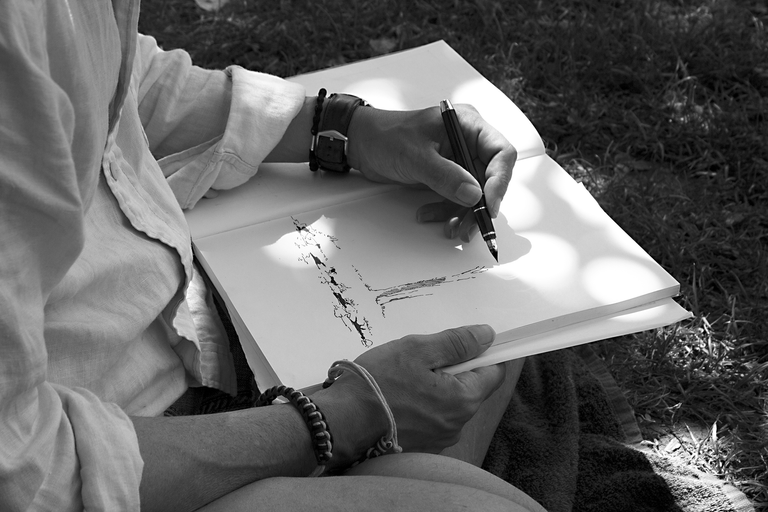
For heavy shadow blocks, I love to use the Kuretake pen brush, like the one shown in the photo:
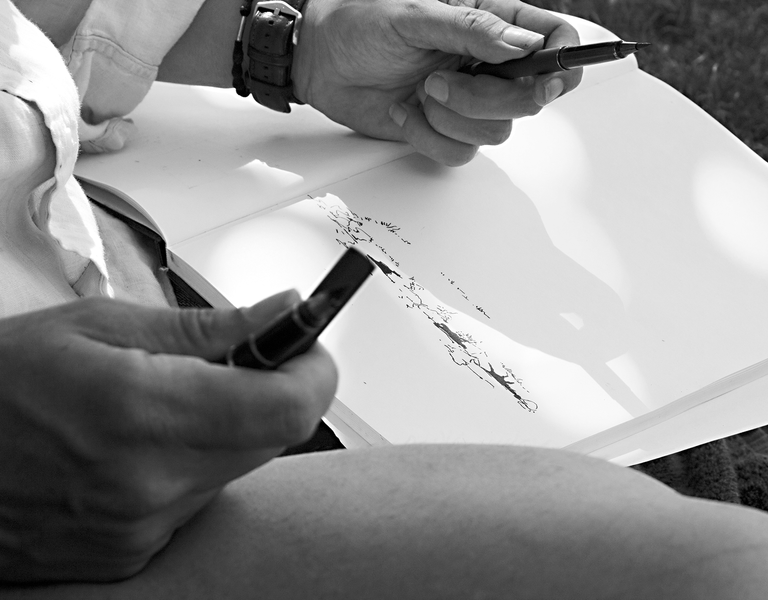
I try to keep the full drawing at the same time, that is, priorising lights and shades among different features of the drawing:
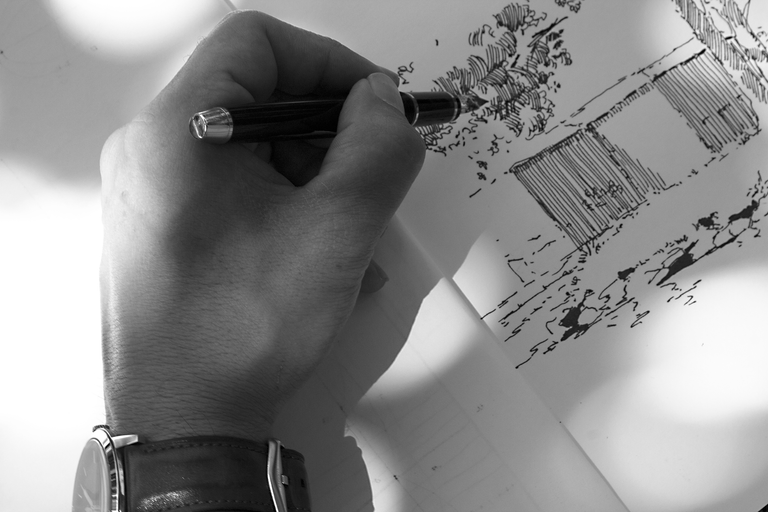
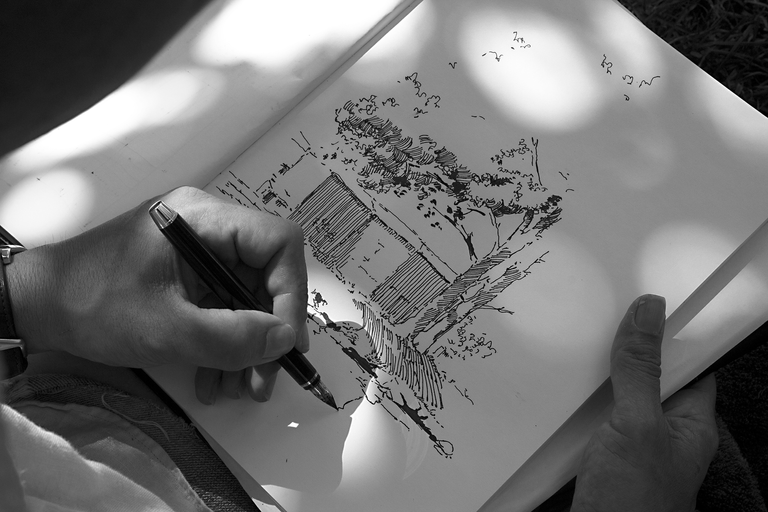
This process must not take more than 30 or 40 minutes. It is a good practice to work at a good speed because the final result normally gets more consistency and try to put the energy in lights and shades as a priority. As a tip, remember: drawing is an understanding of the light.
And here is the final result:
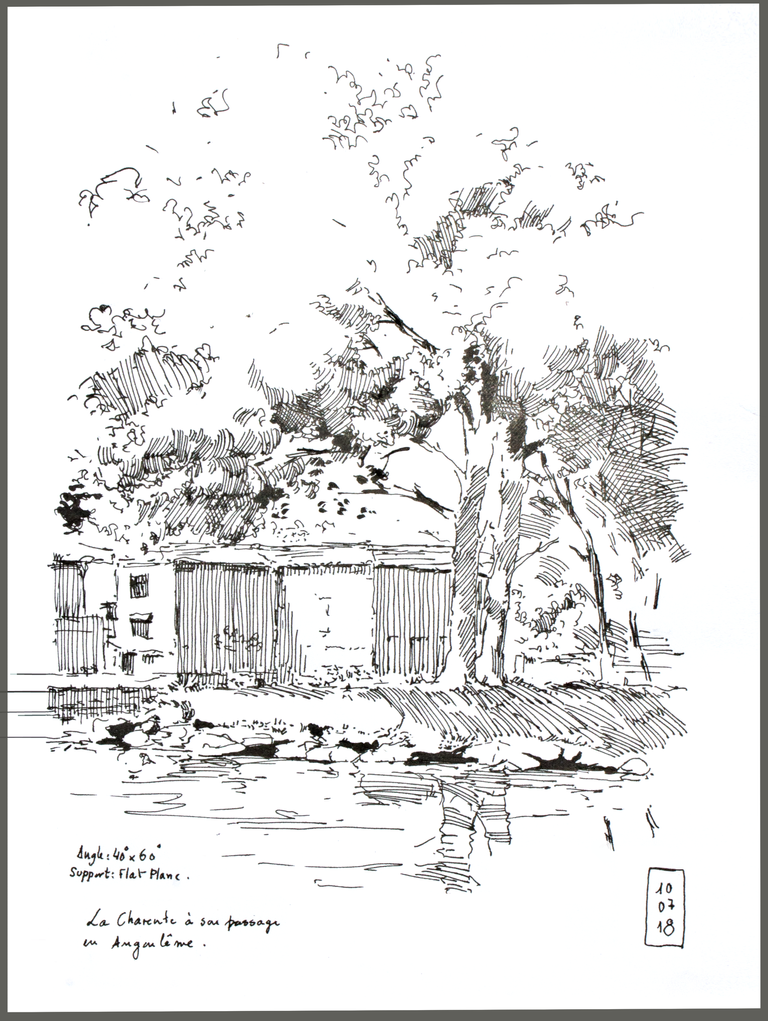
So, now we are ready to concentrate our energies in the colour. Let's begin!
This is my watercolor plein air painting set:
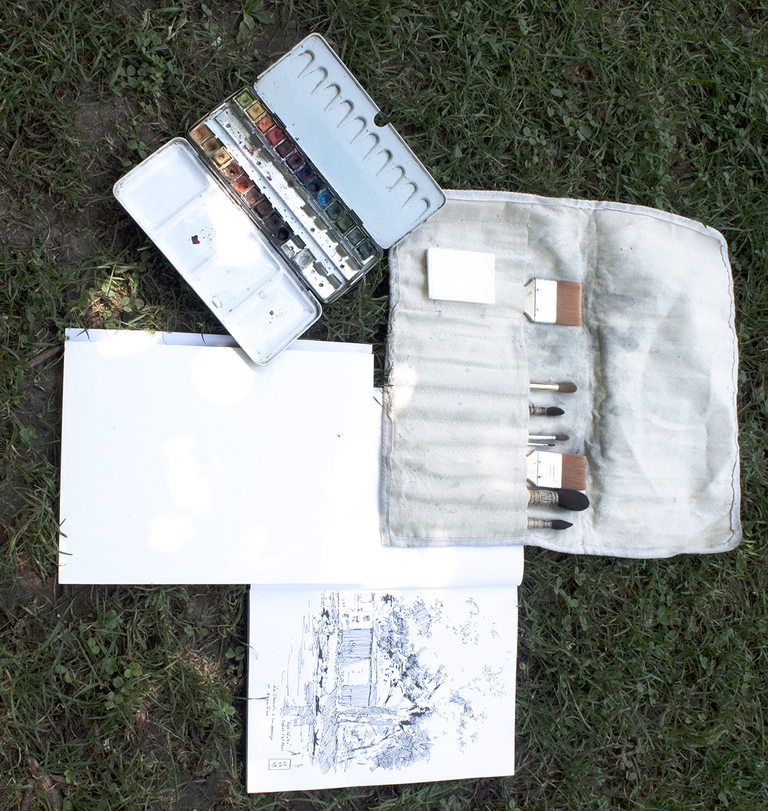
I try to arrange the color palette in two rows: hues in the top row from warm to cold and desaturation pigments in the other one. So when I mixed with the brush, I first choose the hue and then I desaturated it with ocre, sienna or Payne's grey in order to have a broken color.
Humidity is always a big thing, so, to have a nice penetration of the pigment into the paper, I take my big brush full of water and I go through the paper:
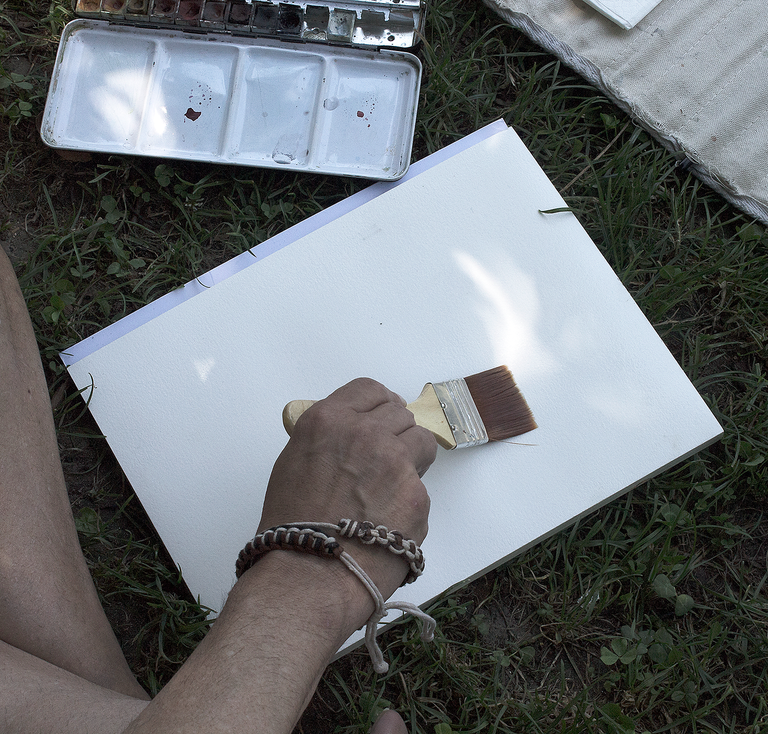
For this kind of painting, it is a good practice to separate cold areas from warm color areas. So, to make simple, I chose to paint in warm colors the background and in cold colors the first plane of the drawing, and the trees.
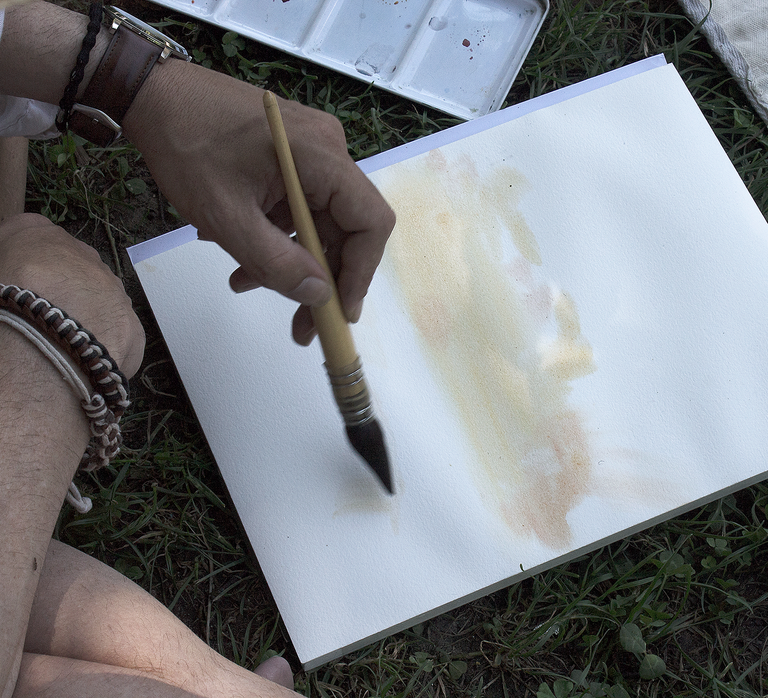
And now, the same process with cold areas:
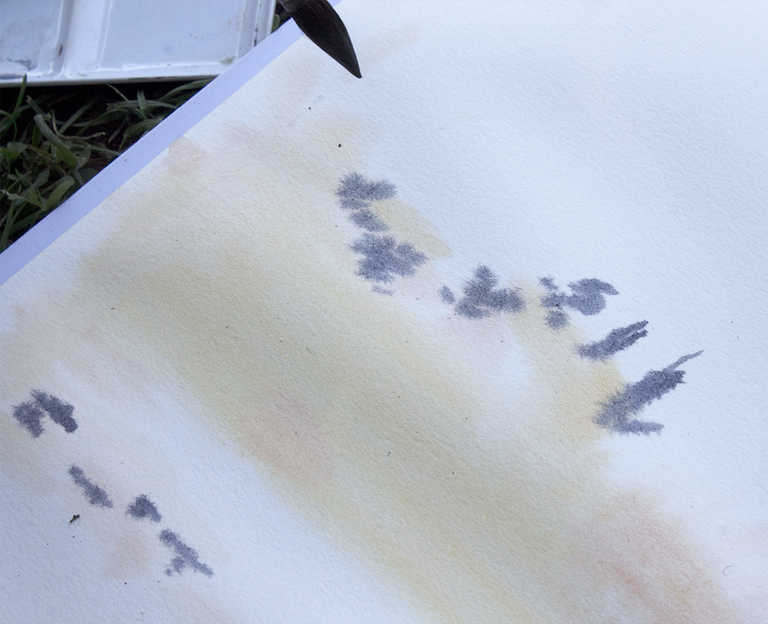
Try to keep always the big picture in mind, don't try to full finish single features.
Then get pleasure adding more and more color information to the painting:
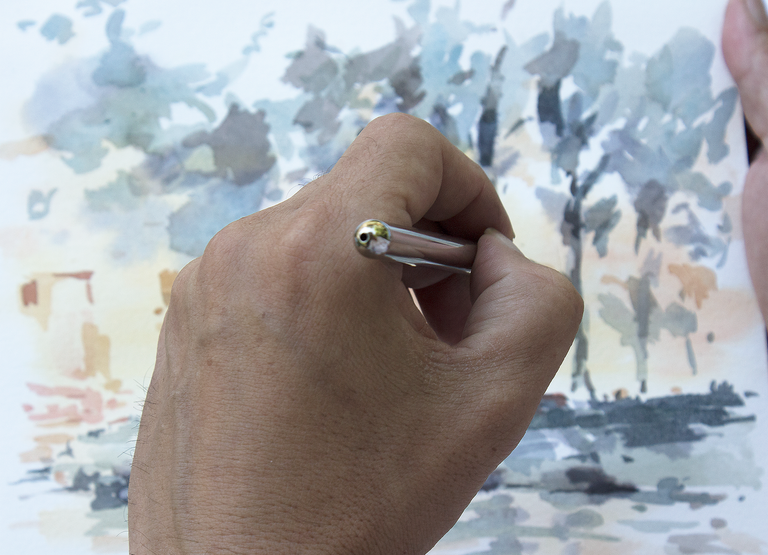
Make pauses from time to time and observe the partial result as a totality, feel the color, have fun!
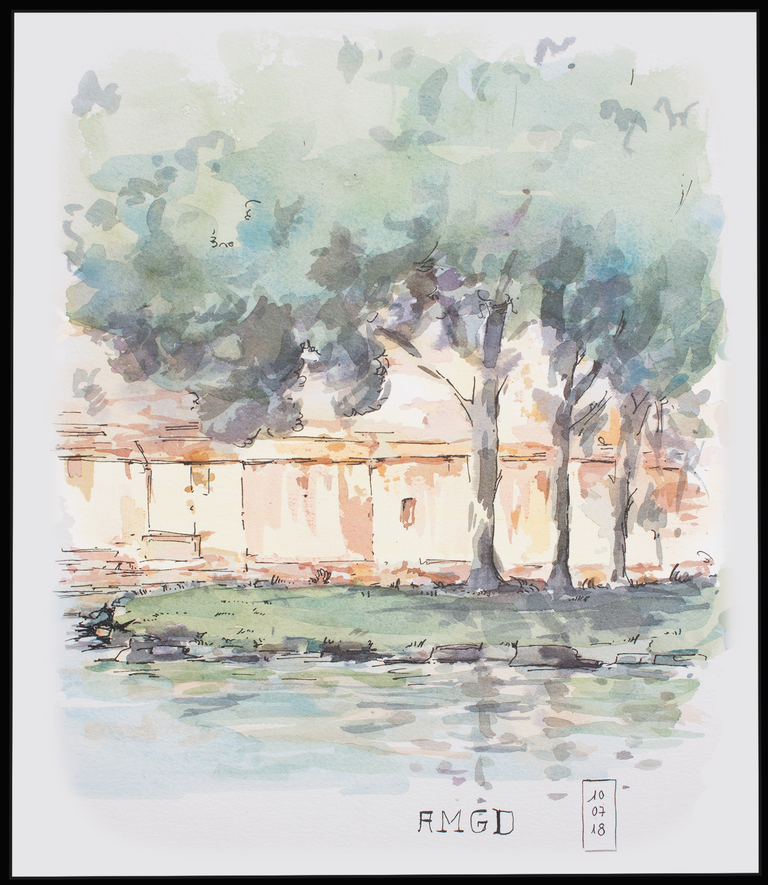
social media:
insta: javier_de_juan
fb:https://www.facebook.com/javier.dejuan.50
Beautiful post, @javier.dejuan ! very lovely step by step process, the ink version is created first to establish the composition, and such a lovely ink version !!! and then the watercolour! a delicate and beautiful view of a river Charente under the shades of trees * ___ *
upvotes and resteems
thank you very much! I took a lot of pleasure doing this "making of .." . It was a good idea!
thanks for upvoting! @dmiton @alamcraft and company
Congratulations @javier.dejuan! You have completed the following achievement on Steemit and have been rewarded with new badge(s) :
Click on the badge to view your Board of Honor.
If you no longer want to receive notifications, reply to this comment with the word
STOPTo support your work, I also upvoted your post!
Do not miss the last post from @steemitboard:
SteemitBoard World Cup Contest - Croatia vs England
Participate in the SteemitBoard World Cup Contest!
Collect World Cup badges and win free SBD
Support the Gold Sponsors of the contest: @good-karma and @lukestokes
Genial, Jota!!! Maybe even I can learn to draw from the master!!!
Impecable descripción, lo que pasa que luego hay que tener la vena del artista que tu tienes
gracias @marcosjouron
Very delicate work!
thank you @kathleenscarboro